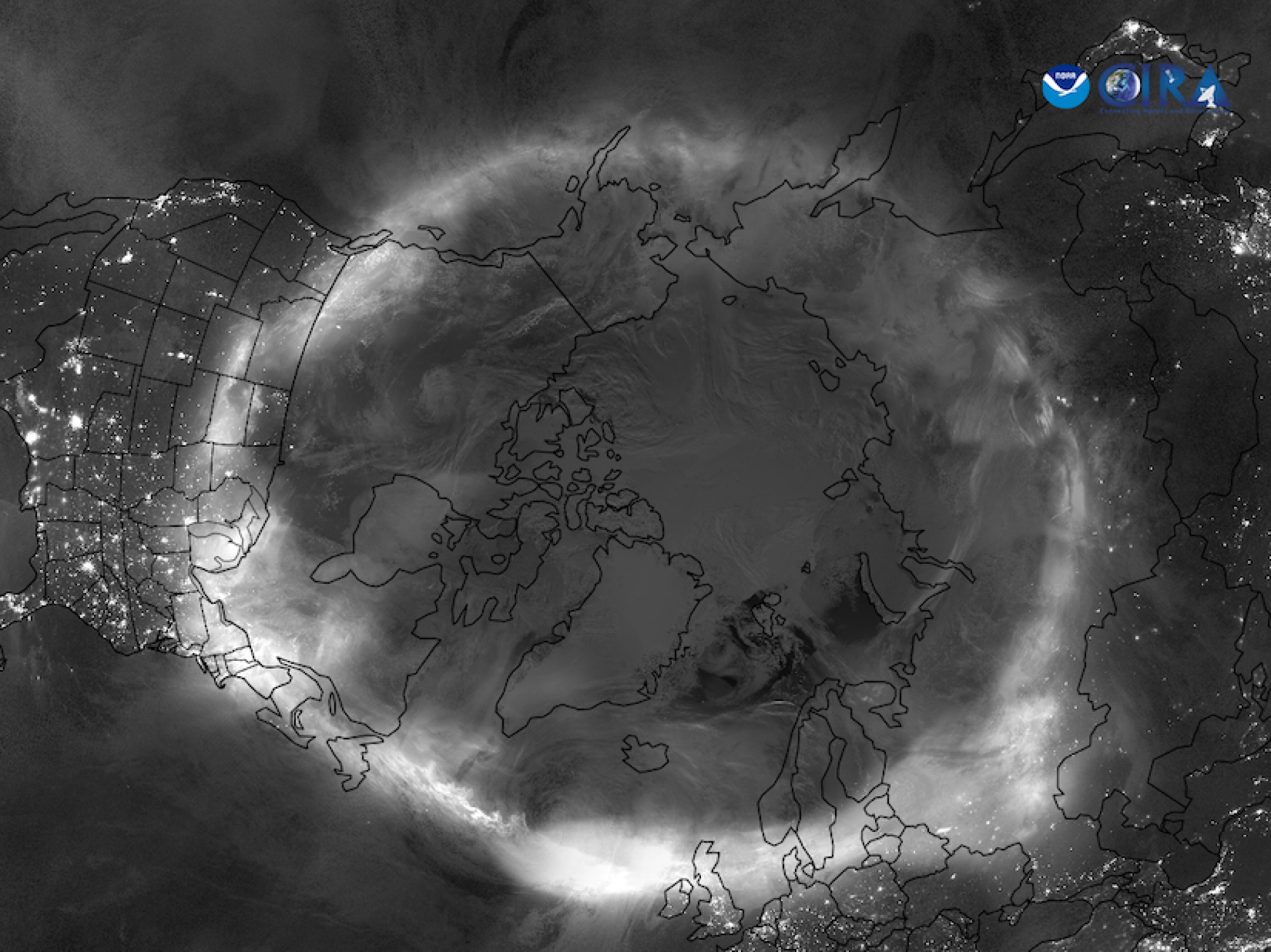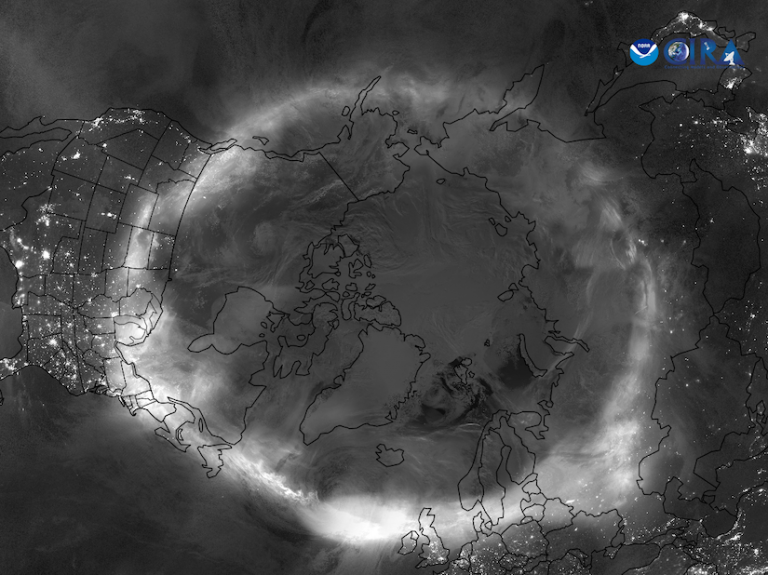
A parade of intense solar storms have hit Earth — the strongest since Halloween over 20 years ago.
While these outbursts from the active sun can pose serious threats to our electrical grid and communications systems, they also stoke brilliant events in our polar skies, commonly called auroras or the northern lights. In particular, our medium-sized star recently emitted a number of coronal mass ejections, or CMEs, which are ejections of super hot gas (plasma). “It’s like scooping up a piece of the sun and ejecting it into space,” Mark Miesch, a scientist with the National Oceanic and Atmospheric Administration’s Space Weather Prediction Center, previously told Mashable.
When they collide with Earth, solar particles can become trapped by our planet’s magnetic field, traveling to the poles and colliding with the molecules and particles in our atmosphere. Then, these atmospheric particles heat up and glow. Three U.S. weather satellites captured this dramatic event from above the North Pole on May 11, showing a glowing ring around places that don’t usually witness the dancing lights.
“Multiple coronal mass ejections from the sun sparked an extreme geomagnetic storm around the Earth last week, creating stunning auroras, even in places where the northern lights are rarely seen,” NOAA’s National Environmental Satellite, Data, and Information Service (NESDIS) explained when it released the image below. “The Southern Hemisphere also reported remarkable auroras from the storm.”
As you can see, the vibrant lights, fueled by the influx of solar particles that drive an event called a “geomagnetic storm,” dipped across the Northeast, Midwest, and Pacific Northwest. This view is a combination of images captured by the U.S. weather and environmental satellites Suomi-NPP, NOAA-20, and NOAA-21.

Credit: NOAA
More intense solar activity may lead to more vivid auroras in 2024. Similar to storm seasons or climate patterns on Earth, the sun experiences a cycle of weather. The sun’s lasts for 11 years. During this pattern, solar activity increases for some 5.5 years, then decreases, then picks up again.
“It’s the space equivalent of hurricane season,” Miesch told Mashable last year.
NOAA expects the sun’s activity to peak, or reach “solar maximum,” this year. Indeed, our star is putting on quite a show.




















0 Comments